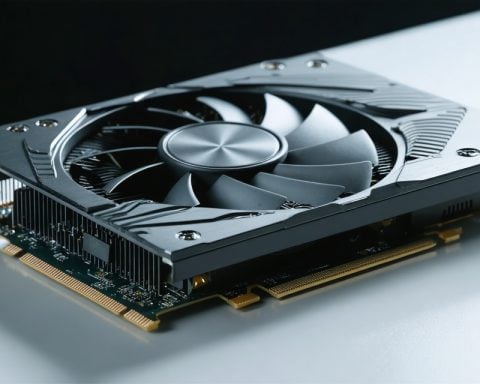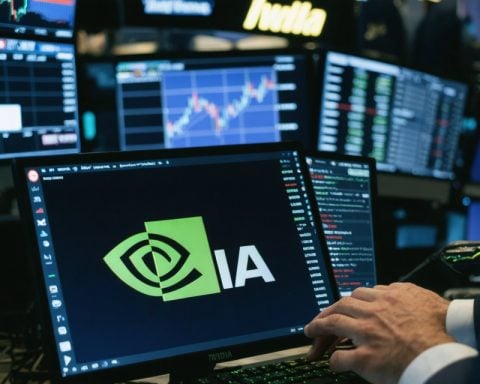- Nvidia transformed a $100 investment into $25,000 over the past decade, achieving a $3.4 trillion market cap.
- The shift to accelerated computing in data centers offers Nvidia a $1 trillion opportunity, capitalizing on its 85% market share in GPUs.
- GPUs extend server life and improve efficiency, key factors in sustainability and cost reduction discussions.
- The cloud gaming market could grow from under $5 billion in 2024 to $237 billion in a decade, with Nvidia well-positioned to benefit.
- Nvidia’s addressable market is about $2 trillion, hinting at significant potential for revenue growth beyond its recent $129 billion fiscal performance.
- Current valuations suggest potential for growth, making Nvidia an attractive option for patient investors.
- The future may not see the same exponential gains, but Nvidia remains a strong prospect for long-term growth and innovation.
The shimmering success story of Nvidia continues to captivate the market’s attention. Over the past decade, the trailblazing graphics card giant transformed a modest $100 investment into an astounding $25,000. This incredible growth elevated Nvidia to become the second-most valuable company globally, brandishing a colossal $3.4 trillion market cap.
Now, the tech world buzzes with speculation: Can Nvidia sustain this meteoric rise? While replicating its past decade’s 250-fold increase appears far-fetched, the path ahead is paved with promising opportunities, especially in the realm of accelerated computing.
In our increasingly digital age, the shift to accelerated computing within data centers presents Nvidia with a $1 trillion opening. As data centers grapple with the demands of high-performance computing and AI, the reliance on Graphics Processing Units (GPUs) is expected to surge. Unlike CPUs, which handle tasks serially, GPUs thrive in executing parallel computations swiftly, making them the optimal choice for managing intensive workloads with reduced energy demands.
The charm of GPUs lies in their ability to extend server lifespans and enhance efficiency, a compelling proposition amidst the pervasive push for sustainability and cost reduction. It’s little wonder that Nvidia, holding an impressive 85% grip on the data center GPU market, is poised to capitalize significantly on this trend. Even relinquishing some market share, Nvidia still stands to multiply its revenue fivefold in this space.
The horizon stretches beyond traditional data centers. The burgeoning cloud gaming market is another lucrative avenue. As digital dreams take flight, cloud gaming offers gamers high-quality experiences sans expensive hardware, relying only on robust internet connectivity. Forecasts suggest this market could swell from its sub-$5 billion valuation in 2024 to a staggering $237 billion within a decade. Nvidia’s foothold here positions it to harness this explosive growth.
Add to this the potential of Nvidia’s remaining addressable market, estimated around $2 trillion, and it becomes evident: there’s substantial room for its top line to soar, reflecting far more than its latest $129 billion fiscal showing.
With Nvidia trading at a valuation below its historical average and a Price/Earnings-to-Growth ratio that hints at fair value, patient investors may find it a worthwhile addition to their portfolios. The upcoming decade might not mirror the exponential gains of the past, but the potential remains enticing. As Nvidia sets its sights on future frontiers, it represents both a beacon of innovation and a promising prospect for sustained growth.
Nvidia’s Future: Opportunities, Challenges, and Investment Insights
Nvidia’s Position in the Tech Landscape
Nvidia’s remarkable journey from a $100 investment turning into $25,000 over a decade highlights its technological leadership, especially in the graphics processing unit (GPU) sector. In 2023, Nvidia stands as the second-most valuable company globally, armed with a market cap of $3.4 trillion. The company’s dominance is evident with an 85% market share in the data center GPU arena, essential for AI and high-performance computing.
The Growing Importance of Accelerated Computing
Accelerated computing represents a massive $1 trillion opportunity for Nvidia. As data centers struggle to meet the escalating needs of AI-driven applications, GPUs, with their ability to perform parallel computations efficiently, have become more crucial than ever, offering both energy efficiency and enhanced performance.
Real-World Use Cases:
– AI and Machine Learning: Nvidia’s GPUs play a vital role in training AI models faster and more accurately.
– Data Analytics: Companies use Nvidia’s technology to speed up complex data analysis tasks.
– Healthcare Innovations: Nvidia GPUs assist in real-time data processing, facilitating advancements in medical imaging and diagnostics.
The Promise of Cloud Gaming
Cloud gaming is projected to explode from a valuation under $5 billion in 2024 to $237 billion over the next decade. Nvidia is well-positioned to take advantage of this shift by providing top-tier gaming experiences without the need for expensive hardware through its cloud-based gaming services like GeForce NOW.
Addressing Nvidia’s Addressable Market:
With an estimated $2 trillion addressable market beyond data centers and cloud gaming, Nvidia’s expansion potential is vast. Potential sectors include:
– Autonomous Vehicles: Nvidia’s Drive platform is influential in developing self-driving car technologies.
– AI-Powered Edge Computing: Enhancing IoT devices with AI-driven capabilities.
Investing in Nvidia: Market Forecast and Industry Trends
Despite Nvidia’s historical success, replicating its past decade’s growth is a lofty goal. However, with trading valuations below its historical average, Nvidia remains an attractive component of a diversified investment portfolio. The company’s Price/Earnings-to-Growth (PEG) ratio suggests fair value, making it appealing for patient investors seeking long-term gains.
Security and Sustainability
Nvidia is committed to sustainability, emphasizing energy-efficient production with its GPUs. Moreover, their technology often results in reduced overall power consumption for companies, aligning with global environmental goals.
Pros and Cons of Investing in Nvidia
Pros:
– Leading Market Position: Dominance in the GPU market.
– Diverse Revenue Streams: Broadening market opportunities across sectors.
– Innovation-centric: Constant R&D efforts furthering technological leadership.
Cons:
– Valuation Risks: High expectations priced into stock.
– Market Volatility: Fast-paced tech sector leading to fluctuations.
– Competitive Landscape: Growing competition from companies like AMD and Intel.
Actionable Investor Recommendations
1. Diversify: Balance Nvidia with other tech holdings to mitigate sector-specific risks.
2. Long-Term Focus: Emphasize on sustained growth and innovation, not just immediate returns.
3. Monitor Industry Trends: Keep an eye on emerging technologies and Nvidia’s role.
For more in-depth technology and investment insights, visit Nvidia.
By understanding Nvidia’s current trajectory and potential future paths, investors and tech enthusiasts can better navigate the opportunities and challenges that lie ahead.












